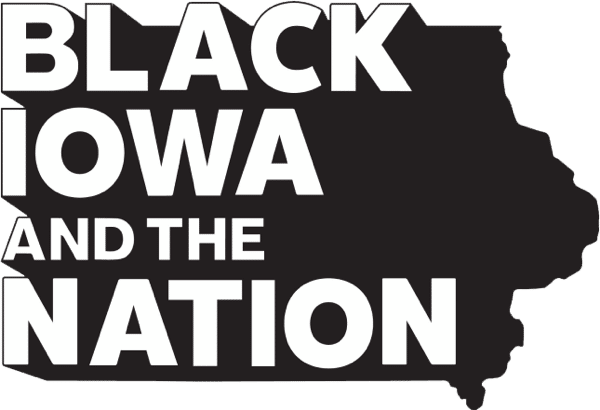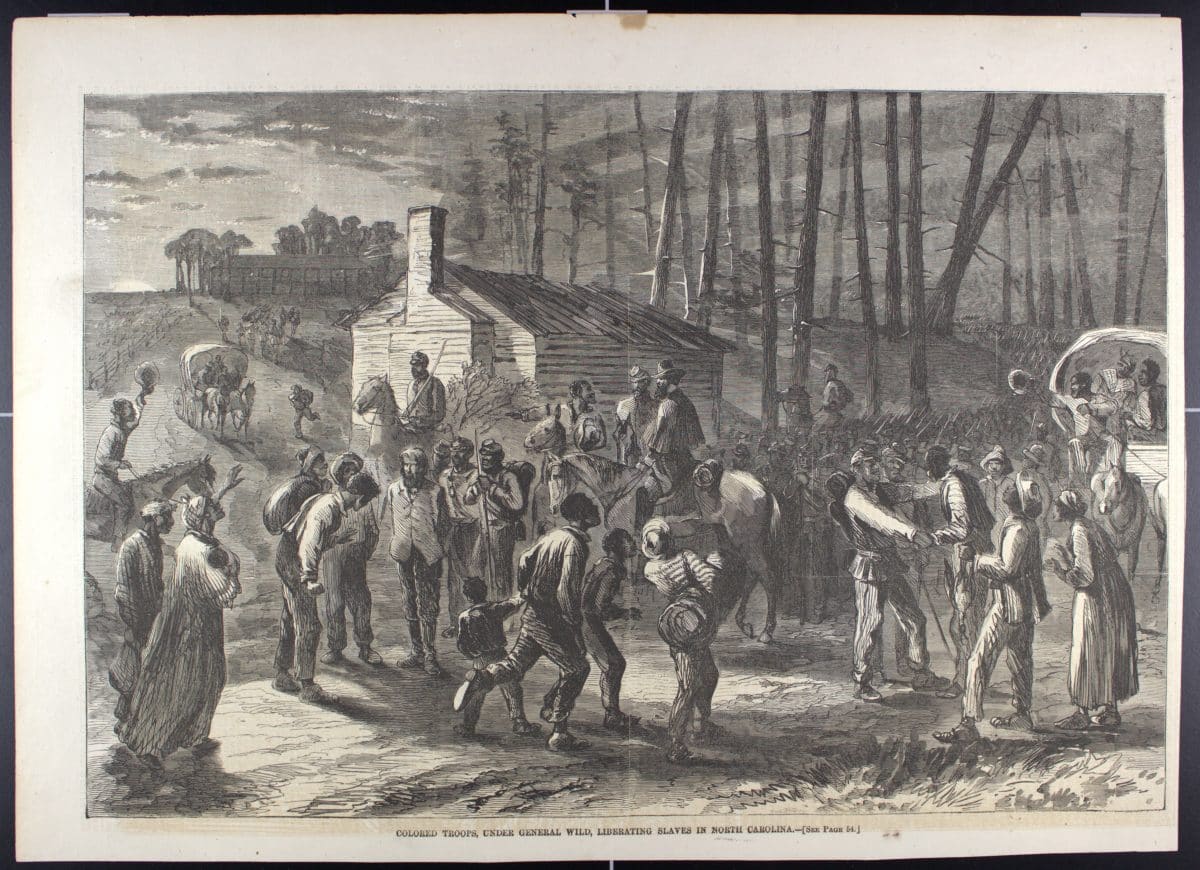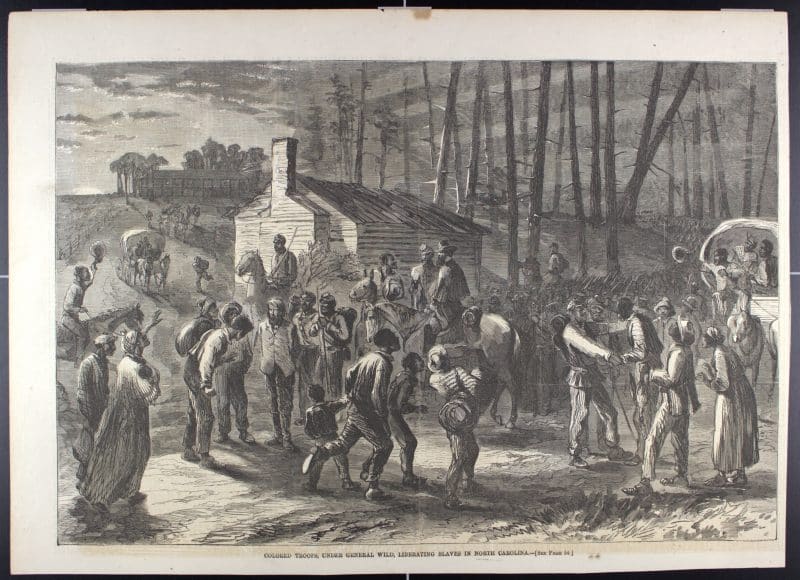the images shows Black Union soldiers liberating Black enslaved people of all ages who greet them joyously. The text accompanying the image, found in the third column on a subsequent page says: “An expedition under Colonel M’Chesney, of the First North Carolina Regiment, which left Newbern December 30, for Greenville, met the enemy near Washington and routed them. The lieutenant who led the Union troops in a charge was killed. The loss on the other side was one lieutenant and five men. The troops engaged on our side were negroes.”
According to Social History for Every Classroom: ” In this journalistic sketch, a group of African American soldiers liberates a plantation in eastern North Carolina. The troops were the so-called “African Brigade” composed of black recruits from Massachusetts and newly freed contraband slaves from Union-occupied territories of North Carolina. Like all black troops in the Civil War, the African Brigade was led by a white officer, in this case an abolitionist from Massachusetts. Although some Northerners doubted whether freedmen would make effective soldiers, Union officers in the area reported that “recruiting for the African Brigade is progressing lively and enthusiastically…Quite a recruiting fever has seized the freedmen of [New Bern]…Four thousand colored soldiers are counted upon in this [district].” Another officer wrote “One can hardly forget the enthusiasm amongst the negroes of this place…” “SHEC: Resources for Teachers, accessed November 3, 2023, https://shec.ashp.cuny.edu/items/show/1767.
The article accompanying this image stated: “NEGRO SOLDIERS LIBERATING SLAVES.
GENERAL WILD’S late raid into the interior of North Carolina abounded in incidents of peculiar interest, from which we have selected a single one…the liberation by the negro battalion of the slaves on Mr. Terrebee’s plantation. As the reader may imagine, the scene was both novel and original in all its features. General Wild having scoured the peninsula between Pasquotank and Little Rivers to Elizabeth City, proceeded from the latter place toward Indiantown in Camden County. Having encamped overnight, the column moved on into a rich country which was covered with wealthy plantations. The scene in our sketch represents the colored troops on one of these plantations freeing the slaves. The morning light is shining upon their bristling bayonets in the back-ground, and upon a scene in front as ludicrous as it is interesting. The personal effects of the slaves are being gathered together from the outhouses on the plantation and piled, regardless of order, in an old cart, the party meanwhile availing themselves in a promiscuous manner of the Confiscation Act by plundering hens and chickens and larger fowl; and after all of these preliminary arrangements the women and children are (in a double sense) placed on an eminence above their chattels and carted off in triumph, leaving “Ole Massa” to glory in solitude and secession.”


